December slaughter below year ago?
With weekly hog slaughter running close to year-ago levels, packers should have the opportunity to catch up on the apparent backlog of 2-plus million hogs.
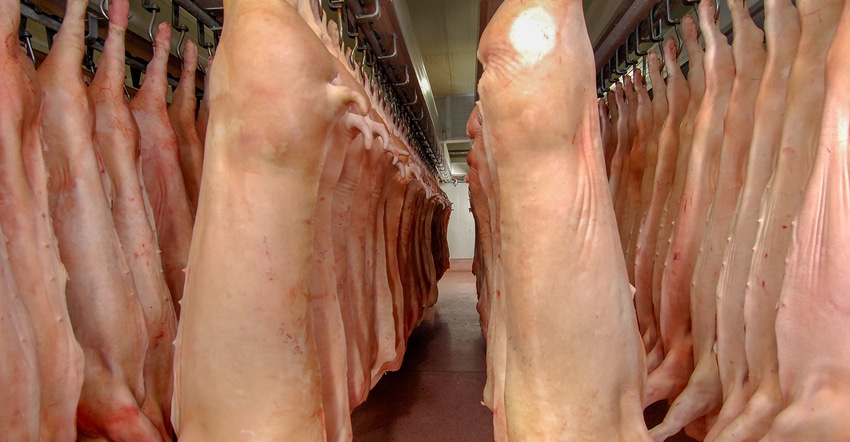
Slaughter capacity appears to be quite close to last year's level. The biggest daily hog slaughter thus far in November is 497,000 head. The biggest in November 2019 was 498,000.
In the last 13 weeks (roughly September through November) U.S. federally inspected hog slaughter was down 0.8% year-over-year. This was far below the 6.1% increase implied by the market hog inventory in the September hog survey.
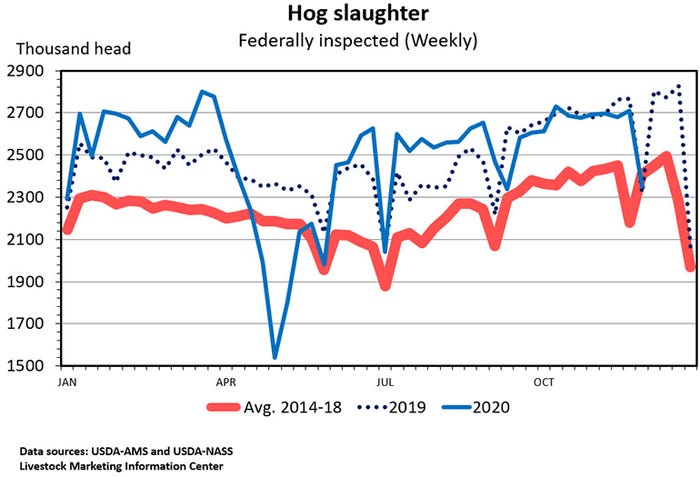
This was the third consecutive quarter that hog slaughter has been well below the level implied by the market hog inventory.
March-to-May slaughter was down 2.89 million head; June-to-August was down 1.56 million head; and September-to-November hog slaughter was down 2.33 million head from the level implied by the September market hog inventory.
This implies that a lot of hogs are missing their planned slaughter date and are being backed up on farms. The shortfall is due to a problem with slaughter capacity, not with a shortage of hogs. Packer problems with COVID-19 among workers has restricted slaughter capacity.
The September Hogs and Pigs Report implied December-to-February hog slaughter will be down 3.5% year-over-year. Since weekly hog slaughter has been running close to year-ago levels, this should give packers the opportunity to catch up on the apparent backlog of 2-plus million hogs.
As one would expect, hog weights have increased as slaughter has fallen short. Thus far, there has been only one week this year with lighter hog dressed weights than a year ago. The average dressed weight in 2020 is down 2 pounds compared to the same weeks of 2019.
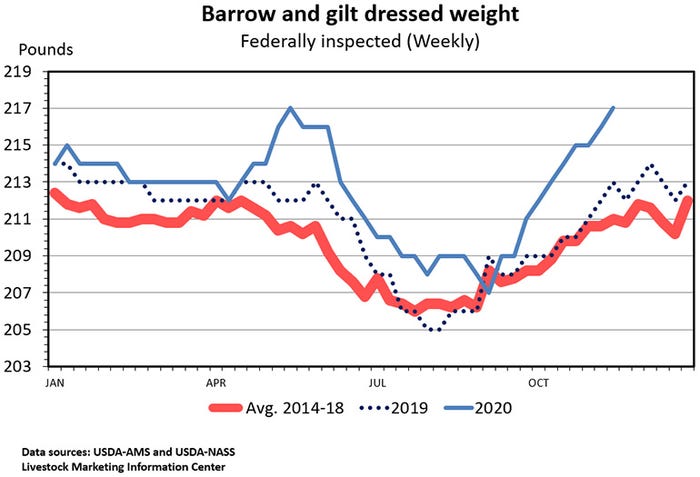
Although hog slaughter was down 0.8% over the last 13 weeks, because of heavier weights pork production was up 0.7%.
The average price of pork in grocery stores during October was $4.084 per pound, up 3.1 cents from the month before and up 17.2 cents from October 2019. Marketing margins are extremely wide this year. It is quite likely the average retail pork price will be a record this year. Yet, the average hog price is likely to be the lowest in several years.
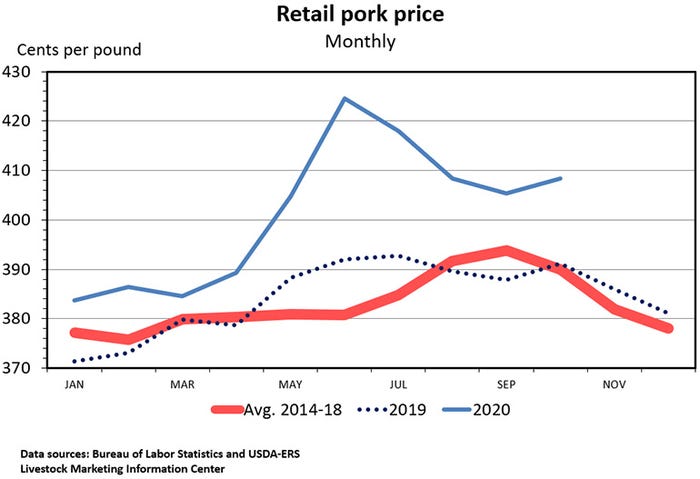
The average live price for 51-52% lean hogs during October was $55.92 per hundredweight, the highest of any month since June 2019. The 2020 national average negotiated price through the days before Thanksgiving averaged $46.21 per hundredweight, which is 24.5% lower than the same period in 2019.
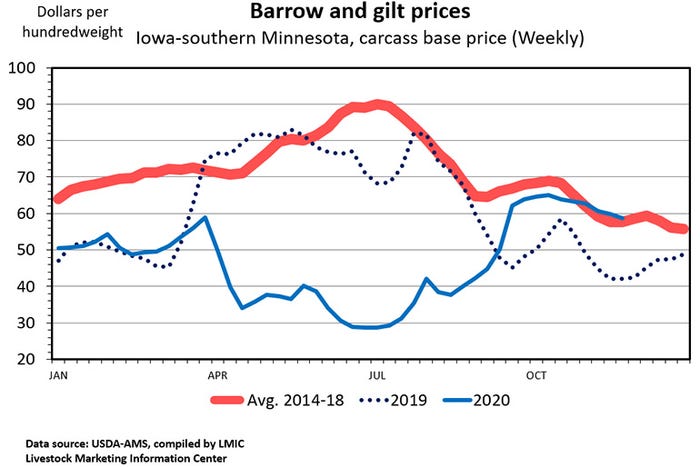
International trade has been a positive factor this year. Through September, U.S. pork imports were down 9.1% (65 million pounds) with the biggest decline in imports from Poland, Spain and the United Kingdom.
Through September, U.S. pork exports were up 20.7% (929 million pounds) thanks to a 200.3% (1.08 billion pounds) increase in exports to China. It appears likely that U.S. shipments to China will drop below the year-earlier level during November and December.
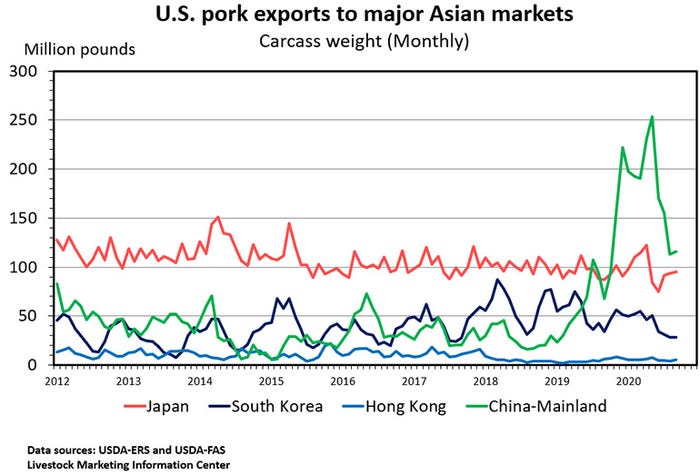
During January-to-September, 25.5% of U.S. pork production was exported and pork imports equaled 3.1% of production. USDA expects both pork imports and pork exports to increase a small amount in 2021.
Live hog imports were up 0.4% during the first nine months of 2020 and are expected to total around 5.1 million head for the year.
Iowa State University's Lee Schulz's calculations show Iowa farrow-to-finish herds earning a profit of $29.24 per head for hogs marketed in October, making it the most profitable month since June 2019.
Omaha corn prices have risen above $4.10 per bushel, more than $1 higher than they were in early August and the highest since the summer of 2019.
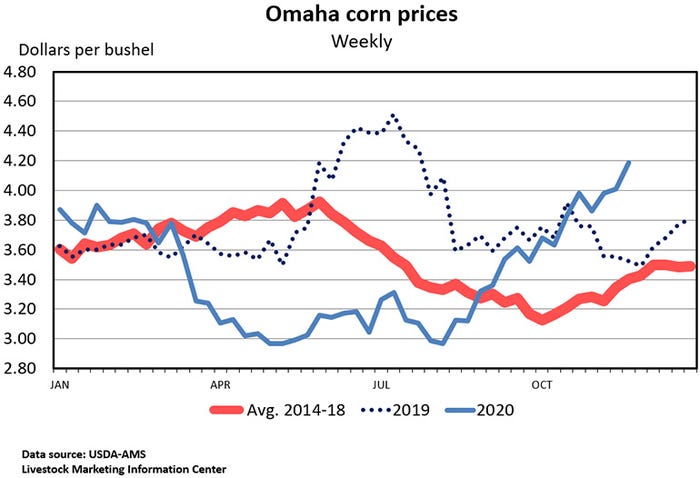
The stocks of pork in cold storage have been extremely low each month since April. For January-to-April, the quantity of pork in cold storage averaged 23 million pounds (4%) higher than last year. For May-to-October, stocks have averaged 152 million pounds (25%) lower than last year. These tight supplies are keeping retail pork prices high.
In the last 13 weeks, U.S. sow slaughter was up 6.6%. This was despite a 4% decline in sow imports from Canada. Thus, net slaughter of U.S. sows was up 8.1%.
In the September Hogs and Pigs Report, USDA said the breeding herd was down 1.5% from the year before. The large sow slaughter this fall implies the breeding herd will be even smaller in the December survey.
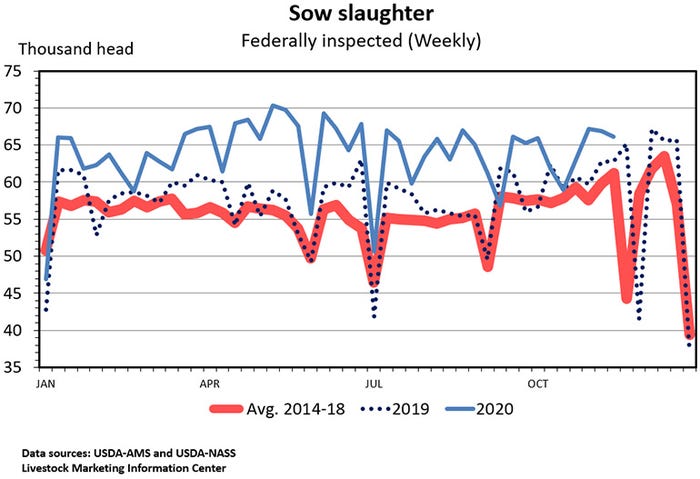
The lean hog futures contracts are predicting a typical seasonal pattern for hog prices in 2021. The futures market indicates carcass hog prices will increase from their current level to $81.50 per hundredweight by mid-summer then decrease to a dollar lower than the current level by the end of 2021.
Corn futures prices currently expect a price increase through spring to a peak of $4.37 per bushel in mid-summer then declining to $4.14 by the end of 2021. Soybean meal is expected to hold steady around $395 per ton until mid-year then decline to $350 per ton by the end of 2021.
Source: Ron Plain, who is solely responsible for the information provided, and wholly owns the information. Informa Business Media and all its subsidiaries are not responsible for any of the content contained in this information asset. The opinions of this writer are not necessarily those of Farm Progress/Informa.
About the Author(s)
You May Also Like





